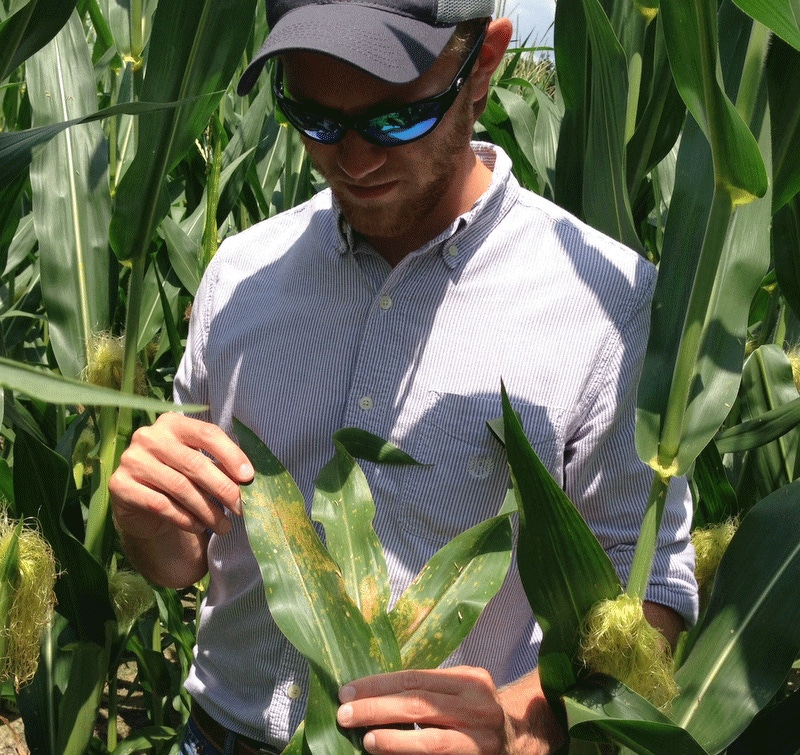June 18, 2014

Southern corn rust is the worst in a decade in Georgia, and peanut growers in the state need to know what to do as they face a shortage of chlorothalonil in peanut production.
University of Georgia Cooperative Extension plant pathologist Bob Kemerait provides below his latest points of action on disease activity in Georgia row crops:
Southern corn rust
Southern corn rust has been confirmed in many counties all across South Georgia
Sporadic afternoon and evening thunderstorms are likely to further move rust spores and also provide the moisture important for infection.
I believe that this is the most significant threat of southern rust in Georgia in the past 10 years.
Southern corn rust (SCR) reduces the photosynthetic capacity of infected leaves. More importantly, a field where SCR is not controlled may develop extensive lodging problems as the stalk is cannibalized for nutrients to feed the ear.
Dr. Dewey Lee (UGA Extension small grains specialist) and I agree that protecting a crop from rust though the dough stage is beneficial.
I recommend that growers spray by tassel growth stage and then again 2-3 weeks later, depending on the product used in the first application.
On corn where rust is a severe problem, we have seen fungicides protect 25+ bu/A.
Peanut production points
Current conditions with warm weather with developing afternoon thunderstorms create favorable conditions for leaf spot diseases and white mold. As mentioned (previously), it appears that chlorothalonil (Bravo, Echo, Chloranil, etc.) will be "short" in our supply chain this year and I am already getting many calls and questions about it.
Here are UGA strategies for dealing with the shortage of chlorothalonil in peanut production:
Consider using a strong leaf spot fungicide like "Headline" (9 fl oz/a, 45 days after planting) to initiate an excellent leaf spot program and to replace potentially 2 applications of chlorothalonil (30 and 44 days after planting).
Reduce the rate of chlorothalonil used in a leaf spot applications by partnering with another fungicided. Examples include mixing chlorothalonil (1 pt/A) with Tilt (propiconazole, 2 fl oz/A) or Alto (cyproconazole, 5.5 fl oz/A) or Topsin-M (5 fl oz/A).
Peanut RX prescription fungicide program schedules from the major chemical companies are available at local UGA Extension offices.
Information provided by Brian Tankersley, UGA Extension coordinator in Tift County.
About the Author(s)
You May Also Like






